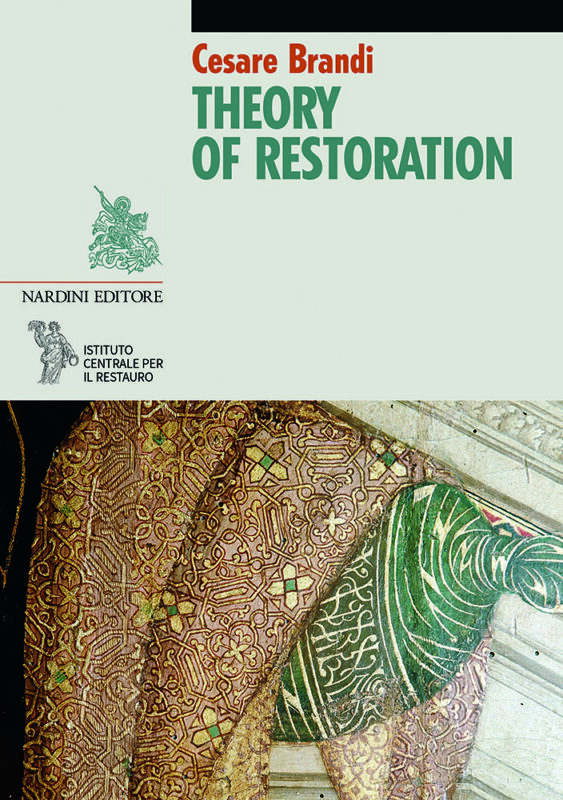News, Restauro/Restoration/Conservation
The cleaning of pictures in relation to patina, varnish and glazes
The recent acrimoniuous controversies on the cleaning of pictures has done nothing more than paralyse the positions taken up by the upholders of radical cleaning and the partisans of patina. Unfortunately, once a picture has been totally cleaned, when nothing survives but the layer of paint in full impasto, it is impossible to judge whether glazes have really been removed,, whether there still existed at least patches of olf varnish, and finally whether the patina, even if dark, was not preferable to the raw, brutal sufrace of paint laid bare by the cleaning.
The upholders of total cleaning proceed from a criticism of the concept of patina: they accuse it of being a romantic concept, that is to say, of falsifying the picture by emotional overtones which, according to them, correspond to the romantic predilections of sentimentalism, ruins, mystery, twilight, and so forth.
It is as well to refute from the outset this too hasty assumption about patina. Patina, even if it were worked up artificially and exaggerated in the romantic epoch, was by no means a romantic invention. In 1681, in the hey-day of High Baroque, Baldinucci defined Patena (patina) in the following way in his Vocabolario toscano dell’Arte del Disegno:
Voce usata da’ Pittori, e diconla altrimenti pelle, ed è quella universale scurità che il tempo fa apparire sopra le pitture, che anche talvolta le favorisce [Term employed by painters, which thei otherwise call skin, it being that general darkness which time causes to appear on paintings and which often enhanced them as well].
 The definition is so precise that it can still be substantially accepted today. And let this be borne in mind: it proceeds from a Tuscan writer who had at his disposal the pratice and theory of painting as it had developed in Tuscany, in Florence, where dfartsmanship and intellectualism were so highly prized. It does not come from a Venetian, or from a Tuscan like Aretino, who was steeped in the pictorial tradition of Venice and preferred it to that of Florence.
The definition is so precise that it can still be substantially accepted today. And let this be borne in mind: it proceeds from a Tuscan writer who had at his disposal the pratice and theory of painting as it had developed in Tuscany, in Florence, where dfartsmanship and intellectualism were so highly prized. It does not come from a Venetian, or from a Tuscan like Aretino, who was steeped in the pictorial tradition of Venice and preferred it to that of Florence.
Thus, Tuscan Baroque painting is famous even today for the uncompromising violence of colours which, one might have supposed, would have made the painters of the day all the more predisposed toward patina. The concept of patina might be said to go back even further than the Baroque era.
Already Vasari in his Trattato della Scultura repeats recipes for artificial patinas applied in his day to bronze. This gives cause for reflection. If the sensibility of Renaissance artists induced them to tone down the brightness, and soften the overpowering impact, of newly fashioned bronze, is it not, conceivable that they should also have sought to temper the crudity of their colouring, of the too ostentatious display of hearth-colours, lacquers, and ultramarines?
The triumph of the materials over the form is all to the detriment of the form: the materials in a work of art must be induced to serve, in a subordinate capacity, the image itself. To reach such a conclusion it is not necessary to depart form a theory of aesthetics. All that is needed is the watchful sensibility of the artist who well knows that he cannot and must not sink to the level of the artisan. The work of art in which the materials triumph we call handicraft: the jewel, the vase, the plate, not the picture or the statue. The function of patina, therefore, is to conceal the materials used in a work of art, to arrest the work of art on the threshold of the image, to prevent it from relying or its appeal on irrelevant qulities.
It is as well to emphasise that the arguments pur forward above would equally well hold water in those cases where it was possibile to demonstrate that the colours of old paintings were preserved exavtly in the way that they were applied by the artists, and that above all they maintained, beneath the patina, the ewuilibrium they held originally. This proposition, which the upholders of radical cleaning are bound to assume as a self-evident truth, is an absolutely arbitrary presumption. It is not self-evident, it just cannot be proved.
The last refuge of the upholders of total cleaning is the hypothesis that dirt, varnishes accumulated over centuries and so forth,are being palmed off as patina. It is precisely in order to dispel doubts and reassure wavevers that we are happy to be able to bring forward three important witnesses, from which it can be proved that what we call patina can more often than not be shown to consist either of glazes or of tinted varnishes. Our examples will be chosen from widely divergent periods, so as not to imply that these methods are restricted to any particular school or artist. They are cases which have come to the attention of the Istituto Centrale del Restauro in Rome where the practice of cleaning à l’outrance has never been followed and where, by way of recompense, the author of this article has at least been able to find indubitable proof of the validity of the methods he employed.
When examining the surface of Giovanni Bellini’s Pesaro Incoronation, which an earlier and ill-omened restoration had skinned in an attempt, fortunately checked half-way, at total cleaning, I noticed that around the head of St. Peter the previous incautious restorer had carried away, in an attempt at cleaning, the gold laid on to the alrdeady completed painting with delicate brush-strokes. Now it was possible to observe that, a layer which, if it had been applied at a later date, would necessarily have disappeared with the gold. This observation persuaded me quit confidently to forbid the removal of the varnish in spite of the fact that this course was recommended in the literature on the subject and by experts visiting the Institute.
But the final confirmation of my reasoning came when I turned my attention to the compartment of the predella representing St Terence. Here too, the earlier restorer had tried to clean off the varnish where it has been gilded at one point, on the steps below the Saint, and this is what happened: Bellini had painted in directly on the guiding lines of the perspective but had instead added by glazing the subdivisions of the stones and the bronze clamps – in the Roman manner – between one block of stone and the next. All this had been secured by a fairly thick varnish which was impossible to remove without carrying away with it the parts added by glazing. When the varnish was examined, it was found to be composed of hard resin with traces of yellow lacquer. In other words, Bellini had used a tinted varnish to lay a tone over the whole painting.
(excerpt from the book Theory of Restoration by Cesare Brandi, Nardini Editore)

